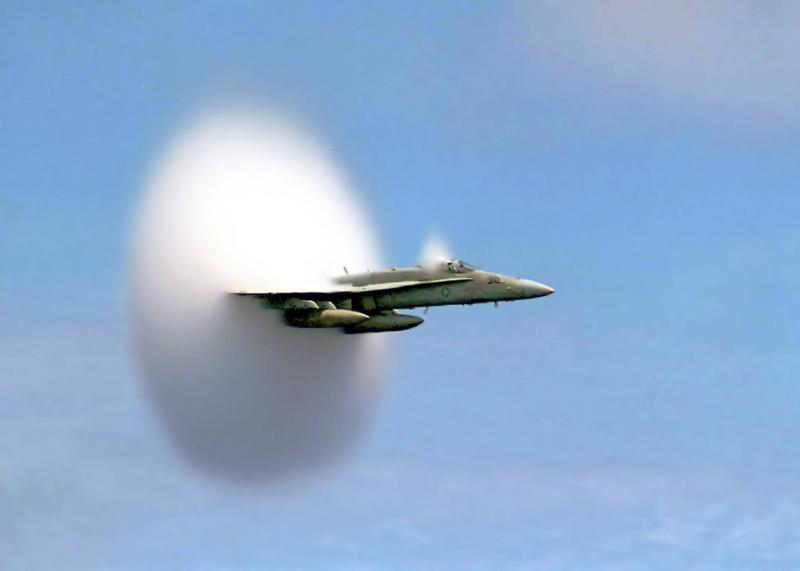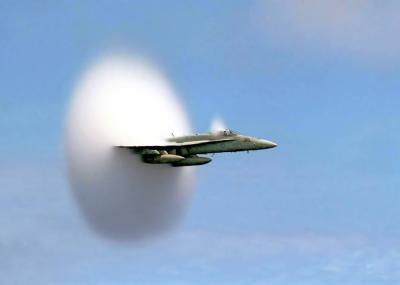Israel is attempting to intimidate Lebanese people through its warplanes by breaching the sound barrier, which produces a thunderous sound that leads to the shaking of buildings. So, what exactly is the sound barrier? The sound barrier or "sound barrier" is a figurative term used in aviation, referring to the force that opposes and resists the motion of an object when its speed reaches that of sound. If the sound barrier is broken and surpassed (i.e., moving faster than the speed of sound), it results in a loud noise.
Pilots, especially during World War II, became aware of the physical phenomena occurring to high-speed aircraft as they conducted training and maneuvers before and during combat. They would lose complete control of their aircraft when they encountered shock waves at the control surfaces. American Captain Chuck Yeager was the first person to pilot an aircraft faster than the speed of sound after volunteering to test a rocket-powered plane (the experimental X-1) to determine the feasibility of breaking the sound barrier. In 1947, Yeager flew the aircraft over Rogers Dry Lake in Southern California, reaching an altitude of 12,192 meters using a B-29 that carried his aircraft. He managed to exceed 1,065.3 km/h, the sound barrier at that altitude, and thus discovered the nature of the sound barrier and how to breach it. In 1953, Chuck Yeager, flying an X-1A, surpassed speeds of 2,655.4 km/h.
**The Sound Barrier Break and Its Causes**:
Sound waves accumulate in front of an object accelerating to the speed of sound, and if there is sufficient acceleration, the object will break through the sound barrier, becoming faster than the sound it produces. The change in pressure around the object due to this process is heard on the ground as an explosion (Sonic Boom).
**Three Classifications of Aircraft Speed**:
1. **Subsonic Aircraft**: This is the most common type, generating pressure changes that travel at the speed of sound at the nose of the aircraft and then dissipate, blending with the airflow.
2. **Transonic Aircraft**: These aircraft are at the speed of sound and experience a sudden increase in drag due to the pressure changes accumulating in front of them instead of dissipating. Generally, these aircraft catch up with the compressed waves as they form due to their significant propulsion force.
3. **Supersonic Aircraft**: These aircraft generate a very strong shock wave, as the airflow around them does not have enough time to adjust to the pressure changes, resulting in a sudden change in air pressure. This change reaches the ground as a sonic boom, which is the sound accompanying the shock wave.
Supersonic flight speed is measured in a unit called "Mach," named after the Austrian physicist Ernst Mach, who died in 1916 and is famous for his research on the transmission of sound waves in the air. "Mach one" means the aircraft's speed equals the speed of sound, and if its speed ranges from one to five "Mach," it is classified as a supersonic aircraft. If it exceeds five Mach, it is classified as hypersonic. Military industries have developed aircraft with speeds around three Mach, aimed at espionage, maneuvering, and other purposes. The speed of aircraft that break the sound barrier is difficult to detect or counter.




